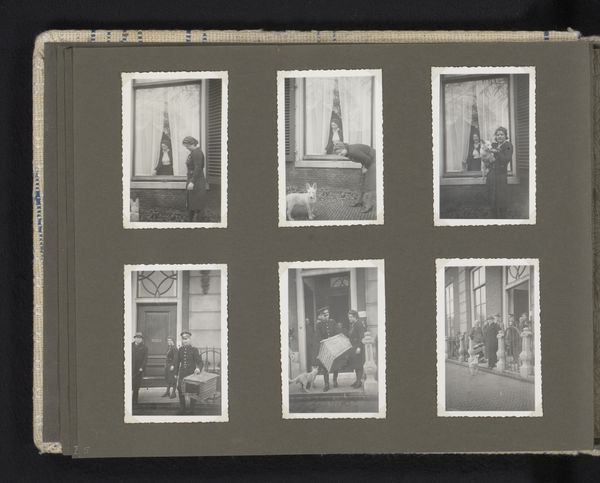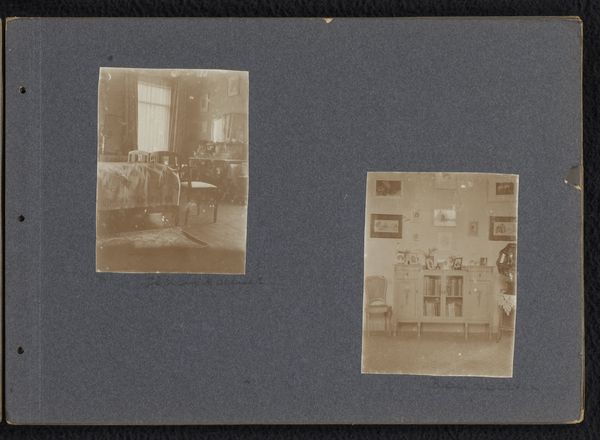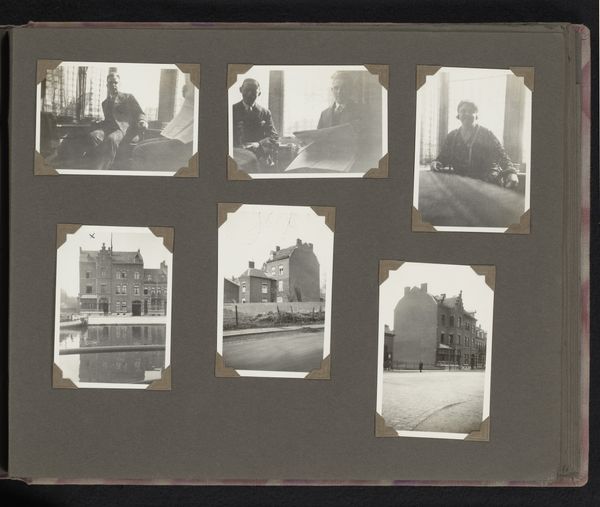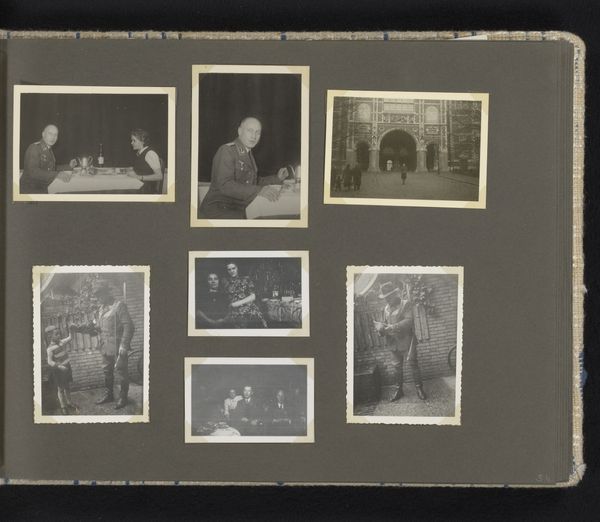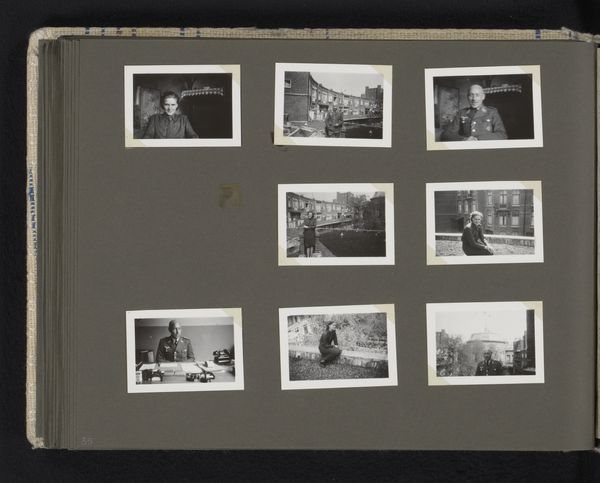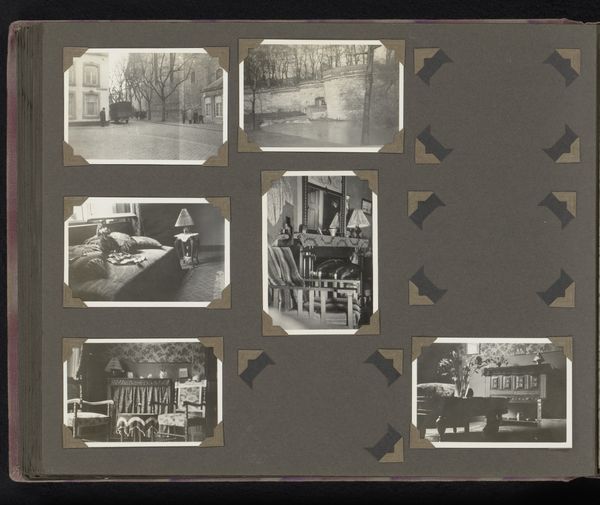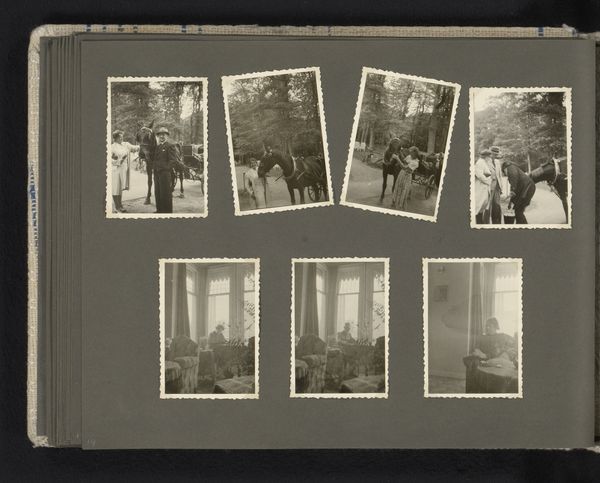
Vier interieurs van een woonkamer en drie portretten van een kennis van Herman Besselaar en Berti Hoppe c. 1930
0:00
0:00
photography, gelatin-silver-print
#
portrait
#
sculpture
#
photography
#
gelatin-silver-print
#
genre-painting
#
modernism
Dimensions: height 236 mm, width 287 mm
Copyright: Rijks Museum: Open Domain
Curator: Here we have “Four interiors of a living room and three portraits of an acquaintance of Herman Besselaar and Berti Hoppe,” a gelatin silver print created around 1930, possibly by Berti Hoppe herself. It offers a fragmented view into a modernist home. Editor: My immediate impression is of a cool, still life tableau – almost a time capsule capturing bourgeois domesticity during the interwar years. The black and white starkness emphasizes the geometric lines of the furniture and the angularity of the architecture. Curator: Note the consistent use of gelatin silver print. Its mechanical nature speaks to the rise of photography as a crucial medium. It was becoming a more democratic tool of representation – and look closely at the photographer's choices on composition and framing. Are we looking at documentation, or something more nuanced? Editor: Exactly. Hoppe was active during a period when questions of female identity and roles were being openly challenged. The recurring motif of a woman on a balcony could symbolize freedom and social mobility, but also isolation or performance. Notice the different poses. The shift in framing and composition encourages us to consider how identity can be represented. Curator: Considering the collaborative environment in which Hoppe worked, along with the industrial and technological shifts shaping art at the time, I think it is less about capturing essence than about recording the specific qualities of light, texture, and form as evidence. The materials shaped the work profoundly, in ways a painter in oil may not be aware. Editor: The "genre-painting" categorization points towards more than a surface reading, however. This challenges assumptions about the private versus the public sphere and points to deeper historical currents surrounding the female experience. Curator: In that sense, the choice of photography itself becomes quite critical: using light-sensitive gelatin, itself the product of a complex manufacturing process, allows the image to serve as an index – of light, space, and also of labor that makes such a photographic moment possible. Editor: It brings a completely different perspective that really connects these individual elements into a broader view. Curator: Right, it is precisely that interconnectedness between labor, artistic endeavor, and lived experience that intrigues me here. Editor: Indeed, these images provoke thoughtful reflections on how art reflects and shapes identities while engaging in cultural criticism, adding layers of depth to what first appeared as simple snapshots.
Comments
No comments
Be the first to comment and join the conversation on the ultimate creative platform.
